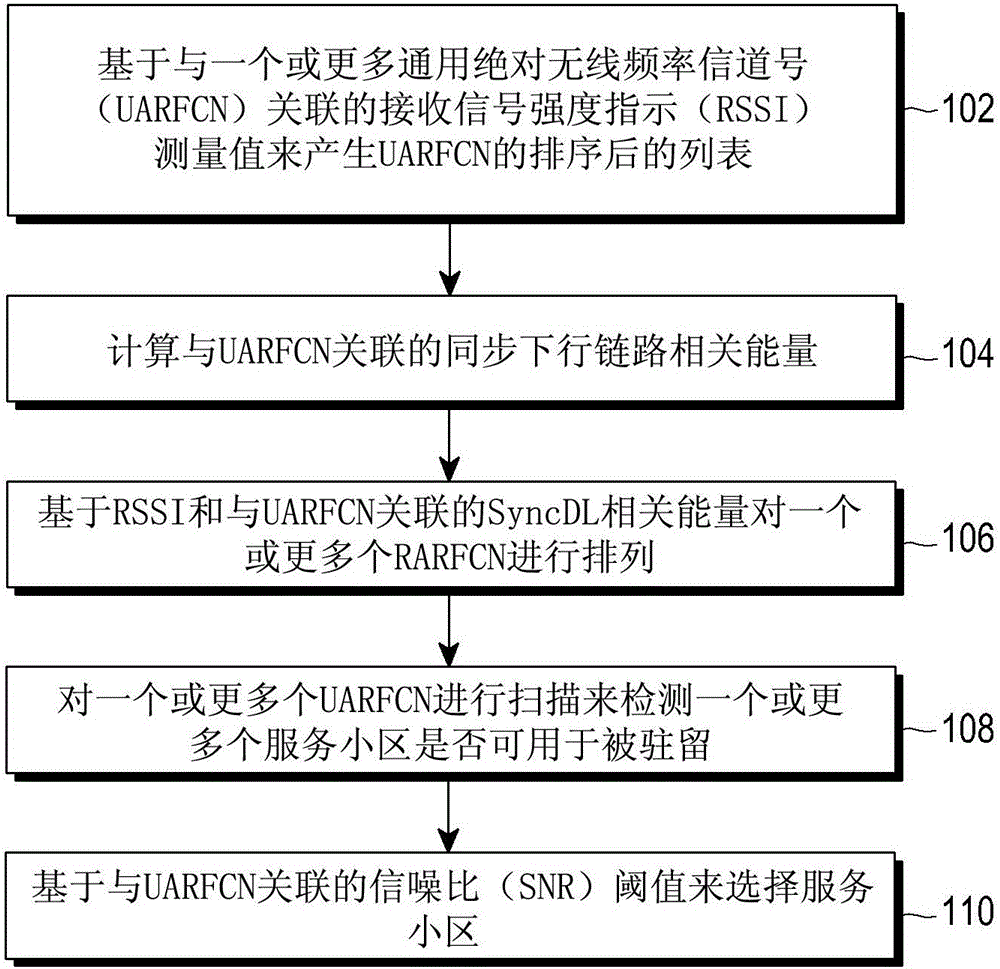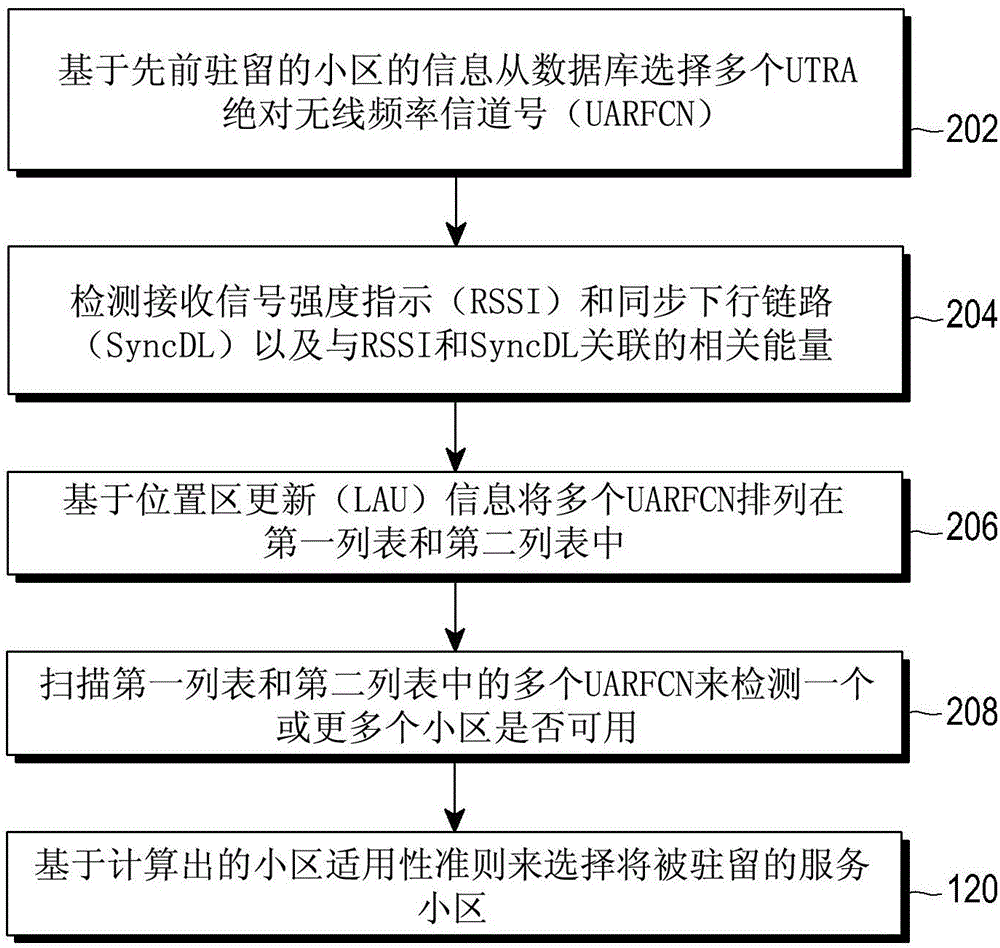Method for cell selection and cell reselection in a time division synchronous code division multiple access (td-scdma) system
A technology of code division multiple access and time division synchronization, which is applied in the field of communication systems and can solve problems such as strong interference in time slot 0, delay in cell residence process, and cell selection failure
- Summary
- Abstract
- Description
- Claims
- Application Information
AI Technical Summary
Problems solved by technology
Method used
Image
Examples
Embodiment Construction
[0013] The present disclosure provides a method and device for providing cell selection in a TD-SCDMA system. In the following detailed description of embodiments of the disclosure, reference is made to the accompanying drawings which form a part hereof, and in which are shown by way of illustration specific embodiments in which the disclosure may be practiced. These embodiments are described in sufficient detail to enable those skilled in the art to practice the disclosure, and it is to be understood that other embodiments may be utilized and changes may be made without departing from the scope of the disclosure. Therefore, the following detailed description should not be considered in a limiting sense, and the scope of the present disclosure is defined by the claims and their equivalents.
[0014] Although certain features of the disclosure are shown in some drawings and not in others, this is for convenience only as each feature can be combined with any or all of the other ...
PUM
 Login to View More
Login to View More Abstract
Description
Claims
Application Information
 Login to View More
Login to View More - Generate Ideas
- Intellectual Property
- Life Sciences
- Materials
- Tech Scout
- Unparalleled Data Quality
- Higher Quality Content
- 60% Fewer Hallucinations
Browse by: Latest US Patents, China's latest patents, Technical Efficacy Thesaurus, Application Domain, Technology Topic, Popular Technical Reports.
© 2025 PatSnap. All rights reserved.Legal|Privacy policy|Modern Slavery Act Transparency Statement|Sitemap|About US| Contact US: help@patsnap.com



